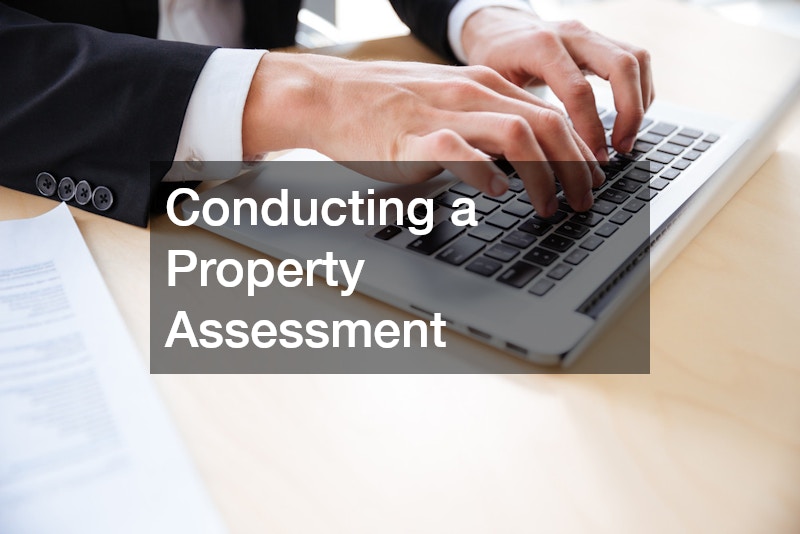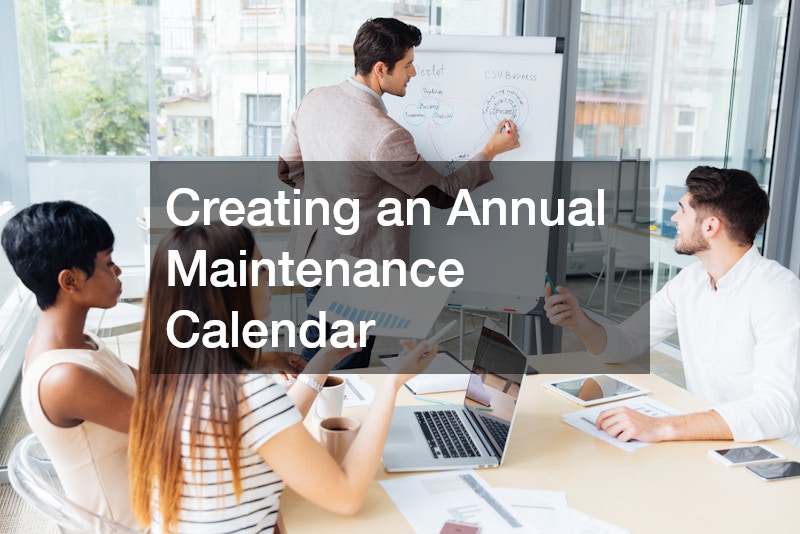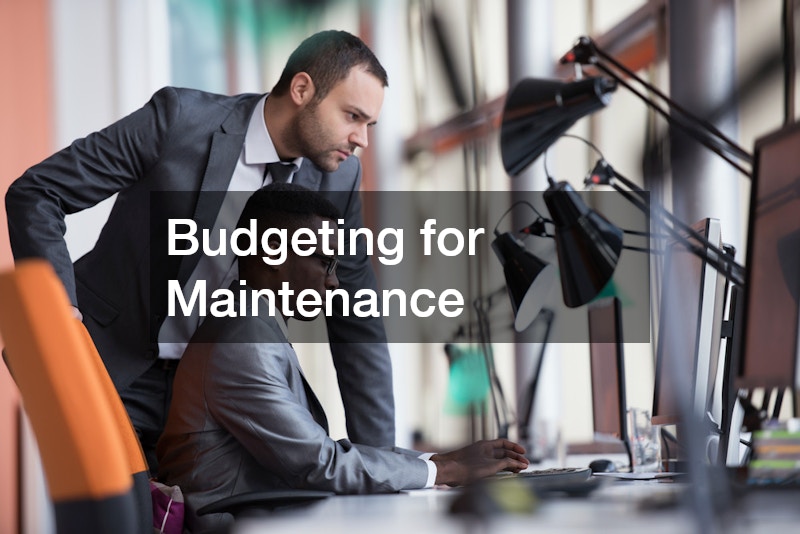Owning a commercial property comes with enormous responsibilities—and one of the most crucial is maintaining it. Whether you manage an office complex, retail space, warehouse, or multifamily building, your property’s success depends on consistent upkeep. A well-maintained facility protects your investment, keeps tenants satisfied, and minimizes expensive repairs down the road.
Many owners take a reactive approach to maintenance, waiting until something breaks before calling for repairs. While this might seem efficient in the short term, it can lead to skyrocketing costs and unnecessary downtime later. The smarter strategy is to develop a structured maintenance schedule—one that keeps your property safe, efficient, and in compliance year-round.
Creating a maintenance schedule isn’t just about ticking off a checklist. It’s about building a proactive system that protects your bottom line. This guide will walk you through how to design a comprehensive schedule for your commercial property—from assessments and budgeting to vendor coordination and long-term planning.

Why Regular Maintenance Matters
Regular maintenance is more than an operational necessity—it’s a financial safeguard. Every system within your building, from HVAC to plumbing to roofing, has a finite lifespan. Without routine care, components deteriorate faster, leading to costly replacements long before their expected service life.
Reactive maintenance—fixing issues as they arise—can result in higher repair bills and even revenue loss if parts of your building become unusable. For example, a broken HVAC unit during peak summer months could force tenants to close temporarily, costing both you and them valuable income. A structured maintenance plan helps avoid these disruptions.
Proactive maintenance also improves tenant retention. Tenants prefer clean, functional spaces where problems are resolved before they become crises. Consistent upkeep demonstrates professionalism and reliability, making tenants more likely to renew leases.
From a financial standpoint, regular maintenance protects your property value. Buyers and investors are far more interested in well-documented, well-maintained facilities. Moreover, neglected buildings are at risk of code violations, increased insurance premiums, and potential legal disputes.
A well-designed maintenance schedule integrates preventive, corrective, and seasonal tasks to ensure every system continues running smoothly. It also helps coordinate with specialists such as a commercial roofer, who can inspect and maintain roofing systems before small issues become major leaks. Make sure you get in touch with a commercial roofer today!
Ultimately, a predictable maintenance plan reduces uncertainty, ensuring your commercial property operates efficiently while saving time and money.
Types of Commercial Property Maintenance
Every property has unique maintenance needs, but understanding the main categories helps you organize your plan effectively. Most maintenance tasks fall under one of the following four types:
Preventive Maintenance
Preventive maintenance focuses on regular servicing to prevent breakdowns before they happen. Tasks like lubricating machinery, changing filters, inspecting electrical systems, or testing safety alarms fall into this category. It’s one of the most cost-effective ways to maintain reliability.
For example, scheduling routine plumbing inspections or electrical checks can reveal minor wear before it escalates. Partnering with local plumbing services ensures issues such as leaks, pressure fluctuations, or water quality concerns are resolved quickly. Preventive care minimizes emergencies, improves safety, and extends the lifespan of major systems.
Corrective Maintenance
Corrective maintenance involves fixing problems after they’re identified—such as repairing a faulty thermostat, replacing broken glass, or patching a roof leak. While corrective actions are inevitable, they should occur less frequently if preventive steps are taken consistently.
Keeping detailed records of repairs helps track recurring issues and uncover patterns that indicate larger underlying problems.
Predictive Maintenance
Predictive maintenance uses data and monitoring tools to forecast when a system will need servicing. For instance, sensors can measure temperature fluctuations, vibration, or energy usage to detect abnormal activity. Early alerts allow for planned maintenance rather than sudden shutdowns.
Larger facilities benefit from software platforms that integrate predictive maintenance across multiple systems, optimizing performance and reducing downtime.
Seasonal Maintenance
Seasonal maintenance prepares your property for weather changes. This includes inspecting the roof before winter, cleaning gutters in the fall, and testing air conditioning systems before summer.
For outdoor spaces, scheduling lawn treatments in spring and early summer keeps landscaping healthy and professional-looking. These tasks are essential not only for aesthetics but also for protecting the property’s structure and accessibility during different seasons.
Each of these maintenance types works together to create a comprehensive plan. Balancing them properly ensures both day-to-day operations and long-term performance remain stable.

Conducting a Property Assessment
Before building your maintenance schedule, conduct a full assessment of your property. This step helps identify the condition of every major system and highlights areas that require immediate or ongoing attention.
Start by inspecting structural elements such as the foundation, walls, and roofing. Examine mechanical systems, including HVAC, plumbing, and electrical wiring. Safety systems like fire alarms, sprinklers, and emergency lighting should also be checked to meet local regulations.
For large commercial facilities, bringing in professionals can streamline the process. A commercial general contractor service can provide comprehensive inspections, ensuring every component meets safety standards. They can also coordinate specialized subcontractors for mechanical, roofing, or structural evaluations.
Your assessment should include:
-
Exterior: Parking lots, sidewalks, landscaping, lighting, and signage.
-
Interior: Flooring, ceilings, wall finishes, windows, and doors.
-
Systems: HVAC, plumbing, fire safety, elevators, and electrical systems.
-
Amenities: Restrooms, kitchens, or any tenant-use spaces.
Don’t overlook the value of external vendors who maintain specific systems. For instance, an inspection from commercial well contractors can confirm that your property’s water systems meet safety standards, while a tree trimming service can address hazards from overhanging branches.
Document your findings in a detailed report. Photographs, notes, and vendor feedback will form the foundation of your maintenance plan, allowing you to track condition changes over time.
Prioritizing Maintenance Tasks
Once your property assessment is complete, you’ll likely have a long list of potential maintenance tasks. The next step is prioritizing them based on urgency, safety, and financial impact.
Start by separating your tasks into four categories:
-
Critical and Immediate: Repairs that pose safety hazards, code violations, or operational disruptions.
-
High Priority: Repairs or upgrades that could worsen if delayed, such as minor leaks or HVAC inefficiencies.
-
Routine Maintenance: Regular cleaning, filter changes, and system checks.
-
Long-Term Improvements: Energy efficiency upgrades or non-urgent aesthetic updates.
Addressing critical issues first prevents emergencies and legal complications. However, consistent attention to lower-priority tasks keeps the property in good condition overall.
Seasonal maintenance should also be prioritized. For instance, scheduling an inspection by a roofing company before heavy rainfall ensures leaks are caught early. Similarly, maintaining pavement, landscaping, and drainage systems before winter prevents ice and erosion problems.
Balance urgency with budgeting to maintain momentum throughout the year. A well-prioritized plan ensures no part of your property is neglected while avoiding financial strain.

Creating an Annual Maintenance Calendar
An annual maintenance calendar brings structure to your plan by outlining when specific tasks should occur. A month-by-month schedule keeps your property organized, ensuring that nothing slips through the cracks.
Start with a 12-month framework divided by system type. For example:
-
January–March: HVAC inspections, ceiling leak checks, and lighting maintenance.
-
April–June: Landscaping, parking lot sealing, and pest control.
-
July–September: Roof inspections, plumbing assessments, and paint touch-ups.
-
October–December: Heating system tests, insulation checks, and gutter cleaning.
Working with service partners ensures consistency. For instance, a local paving service can reseal parking lots annually, preventing potholes and preserving curb appeal. Likewise, HVAC specialists can inspect air handling systems twice per year to maintain energy efficiency.
Include both fixed and flexible items in your calendar. Some tasks—like safety inspections—should happen at set times, while others can adapt based on seasonal weather or tenant schedules.
By setting reminders and using property management software to track tasks, you’ll create a system that simplifies scheduling, budgeting, and compliance.
Choosing and Coordinating Service Providers
Managing a commercial property requires a team of trusted professionals. Building relationships with reliable service providers ensures quality, consistency, and fast response times when needed.
Start by identifying essential vendors for recurring tasks: HVAC, plumbing, roofing, landscaping, and cleaning. Request quotes, verify credentials, and check references before signing service contracts. Many property owners prefer long-term agreements to lock in rates and guarantee availability during peak seasons.
When hiring vendors, consider experience with commercial properties. Commercial systems are larger and more complex than residential ones, requiring specialized knowledge and tools.
You may also need providers for niche services. For example, if your property includes laundry facilities, partnering with commercial laundry companies ensures consistent equipment performance and tenant satisfaction. Similarly, businesses that operate near high-traffic areas can benefit from professionals skilled in overhead door installations to secure loading docks or garage bays.
Always ensure vendors are licensed and insured. Review safety protocols, warranties, and maintenance checklists before work begins. By coordinating multiple vendors under one cohesive plan, you’ll maintain consistency and prevent overlap or scheduling conflicts.
Communication is key. Designate a single point of contact for all vendors and establish a preferred method of reporting—whether through email, a digital platform, or routine site visits.
When service providers work together efficiently, your maintenance schedule operates like clockwork.

Budgeting for Maintenance
A maintenance schedule is only as effective as the budget behind it. Proper financial planning allows you to cover ongoing maintenance without straining cash flow or deferring critical repairs.
Start by creating two categories of expenses: operational (recurring maintenance) and capital improvements (major repairs or replacements). Allocate a percentage of your property’s revenue—typically 1–3% of its total value—toward maintenance each year.
Prioritize preventive work since it saves more than it costs in the long run. Skipping small maintenance tasks often leads to larger bills later.
Also include a contingency fund for emergencies. Even the best-maintained buildings can face unexpected issues like storm damage or equipment failure. Having emergency reserves ensures quick action without financial panic.
When developing your budget, coordinate with professionals such as commercial digital signs technicians, who can maintain signage lighting or messaging systems regularly. These small, planned expenses prevent branding interruptions that could affect tenant businesses.
Finally, review your budget quarterly. Adjust allocations based on historical spending, new vendor contracts, and seasonal changes. A well-managed maintenance budget promotes stability and transparency for both owners and tenants.
Recordkeeping and Compliance
Detailed recordkeeping is vital for both operational and legal reasons. Every inspection, service, and repair should be documented and stored for reference.
Maintenance logs help track performance trends, identify recurring problems, and justify expenses. They also provide critical evidence for warranty claims or insurance reimbursements.
Digitize your records whenever possible. Cloud-based storage makes it easier to share information with tenants, investors, or auditors. Include details such as:
-
Date and type of service performed
-
Vendor name and contact information
-
Cost and payment confirmation
-
Warranties, manuals, and inspection results
Compliance is another major factor. Regular documentation helps prove adherence to building codes, environmental laws, and safety standards. Commercial properties are often subject to inspections by fire marshals, health departments, and labor agencies. Organized records can streamline these reviews and prevent fines.
For properties with complex systems—like water treatment or fire suppression—consider hiring commercial well contractors or certified inspectors to ensure ongoing compliance with local health and safety laws.
Good documentation isn’t just about organization—it’s a form of protection that adds measurable value to your investment.
Monitoring Performance and Making Improvements
Once your maintenance schedule is in place, it’s essential to monitor its effectiveness. Regular evaluation allows you to refine your plan, improve efficiency, and adapt to evolving needs.
Set key performance indicators (KPIs) for each system—such as downtime, cost per repair, and response times. Tracking these metrics provides insight into whether your preventive strategies are working or if adjustments are needed.
Schedule quarterly review meetings with your team and key vendors. Use these discussions to analyze what’s working well and where improvements can be made.
If recurring issues appear in certain areas, reassess whether your maintenance frequency is sufficient. For example, if HVAC breakdowns continue despite routine servicing, you may need to schedule more frequent inspections or evaluate equipment age.
Tenant feedback can also be valuable. Encourage tenants to report maintenance concerns promptly and share their experiences. Quick response times build trust and demonstrate professionalism.
Lastly, remain flexible. Technology, regulations, and environmental factors evolve constantly. Partnering with experts—such as commercial general contractor service teams—helps ensure your property adapts to new safety codes, efficiency standards, and best practices.
Regular review and adaptation keep your maintenance program effective and forward-thinking
Creating a maintenance schedule for your commercial property is one of the most powerful ways to protect your investment, enhance tenant satisfaction, and ensure long-term success. A proactive approach saves money, reduces downtime, and strengthens your property’s reputation for quality and reliability.
By conducting thorough assessments, prioritizing tasks, budgeting wisely, and coordinating trusted professionals, you establish a foundation for consistency and efficiency. Each vendor—from local paving service crews to tree trimming service providers—plays a vital role in keeping your facility safe, functional, and attractive.
Whether you manage a retail plaza, industrial park, or office complex, your property’s value depends on how well it’s maintained. Taking the time to design and implement a comprehensive maintenance schedule transforms your approach from reactive to proactive—ensuring every system, surface, and space operates at its best year-round.
With the right structure and the right partners, your commercial property will continue to serve tenants and customers reliably, efficiently, and profitably for decades to come.




